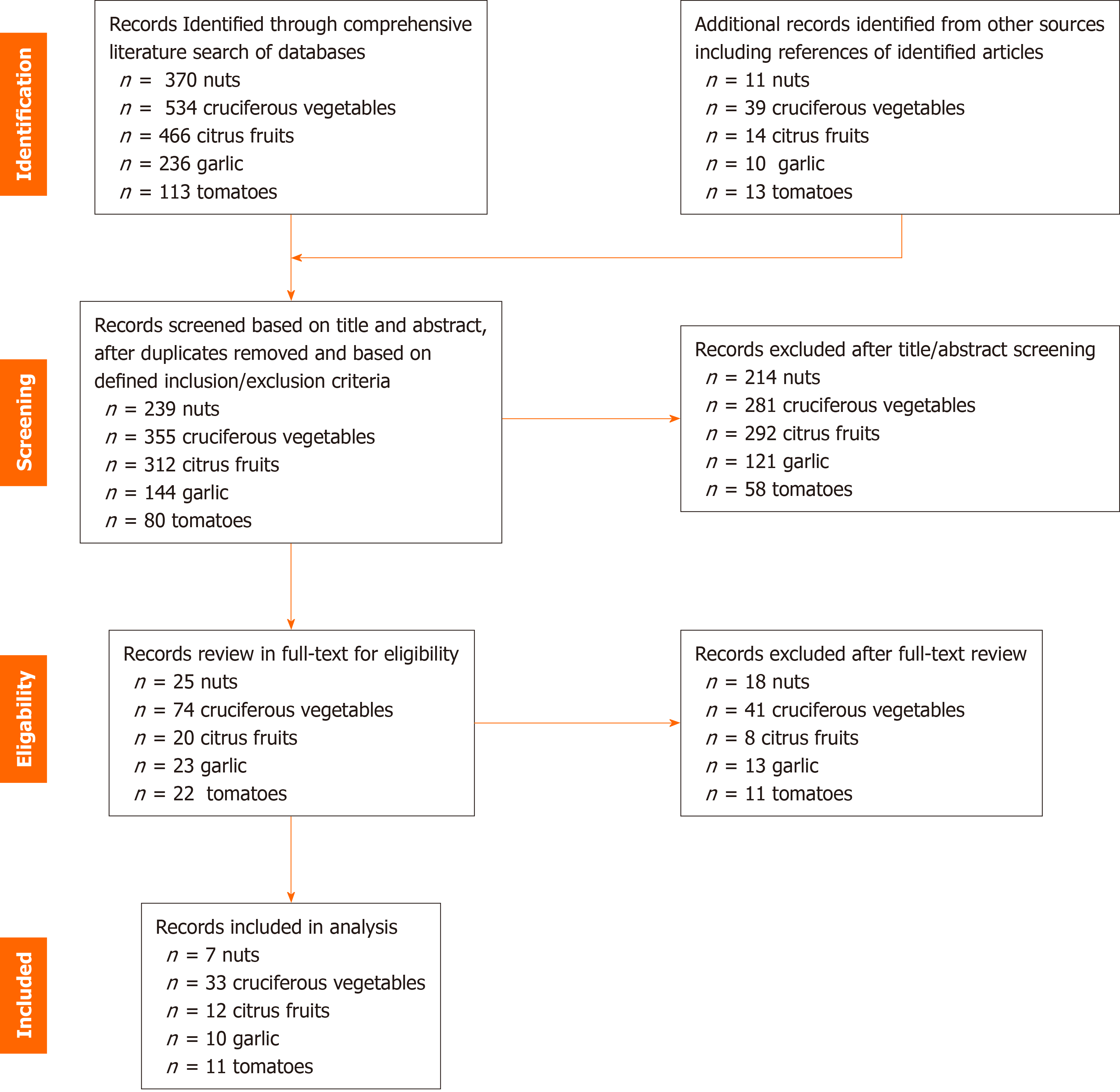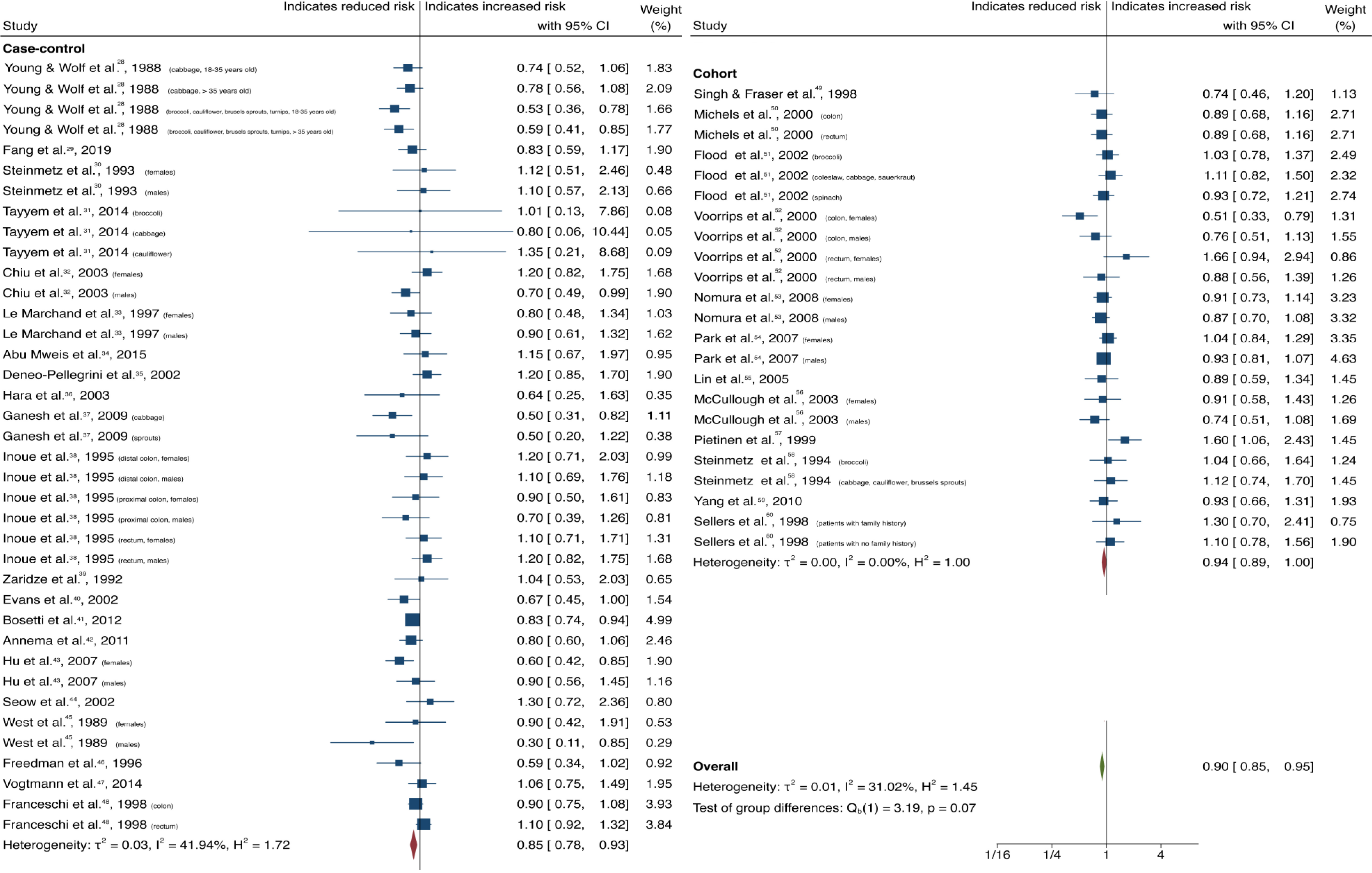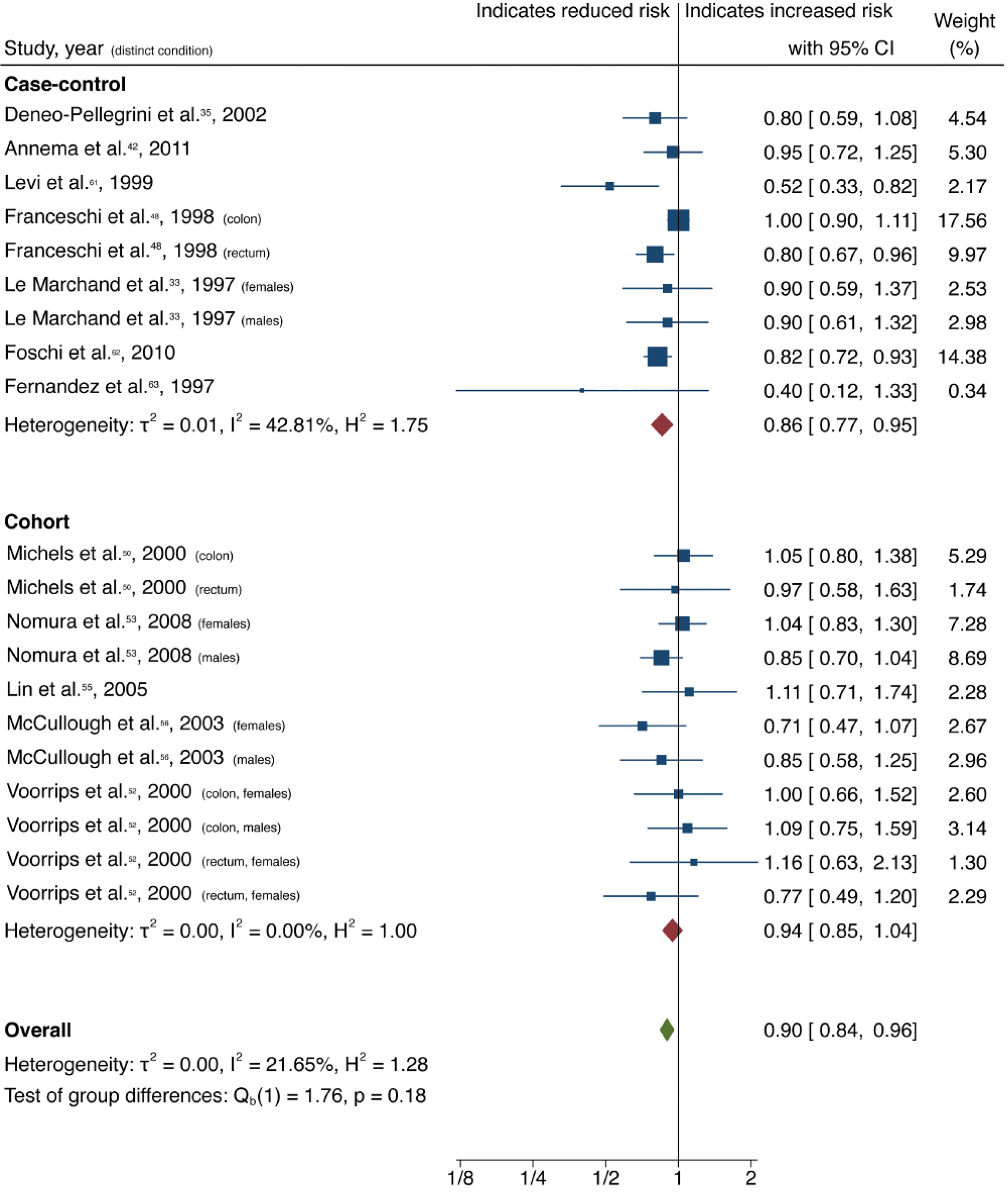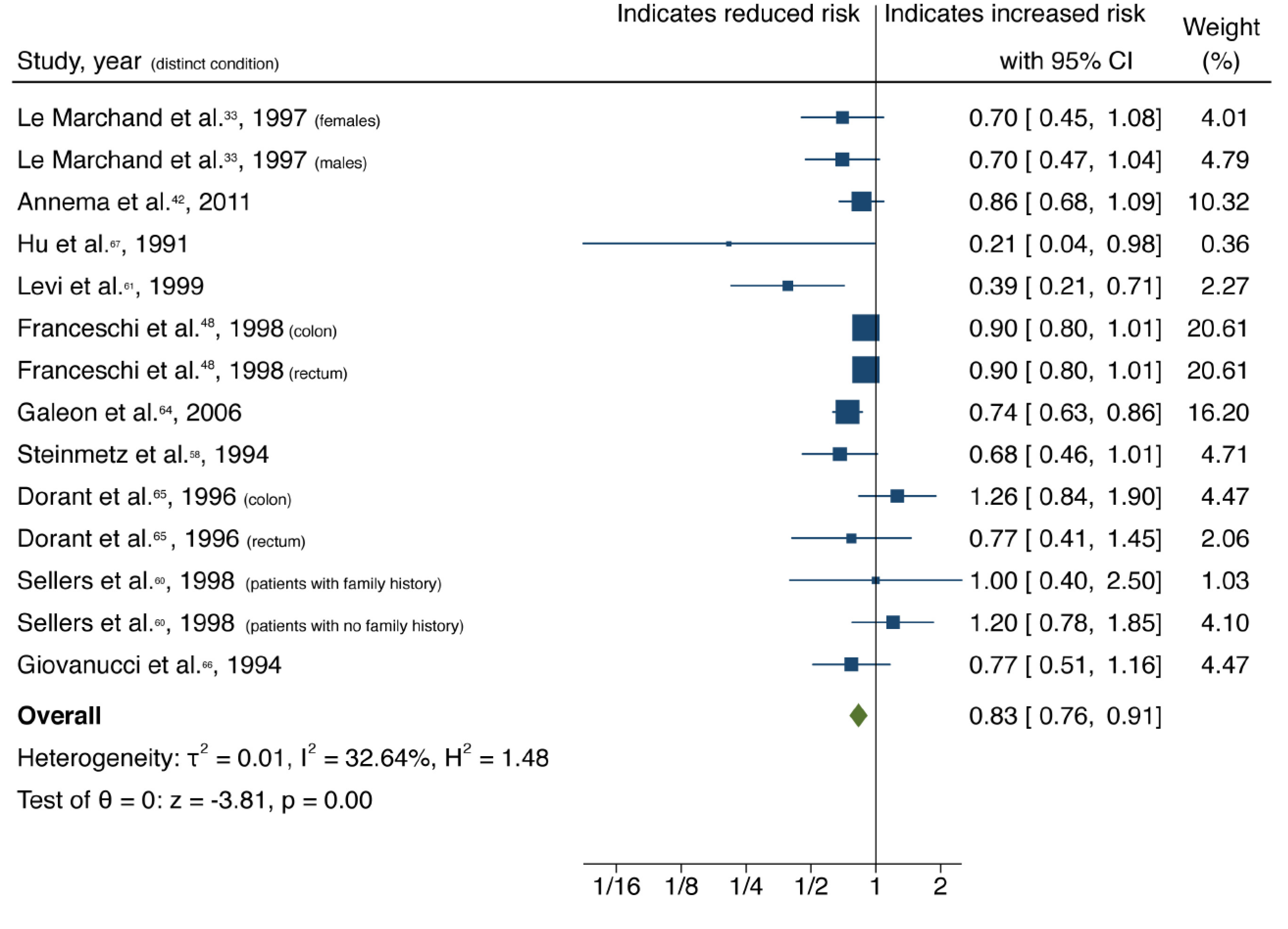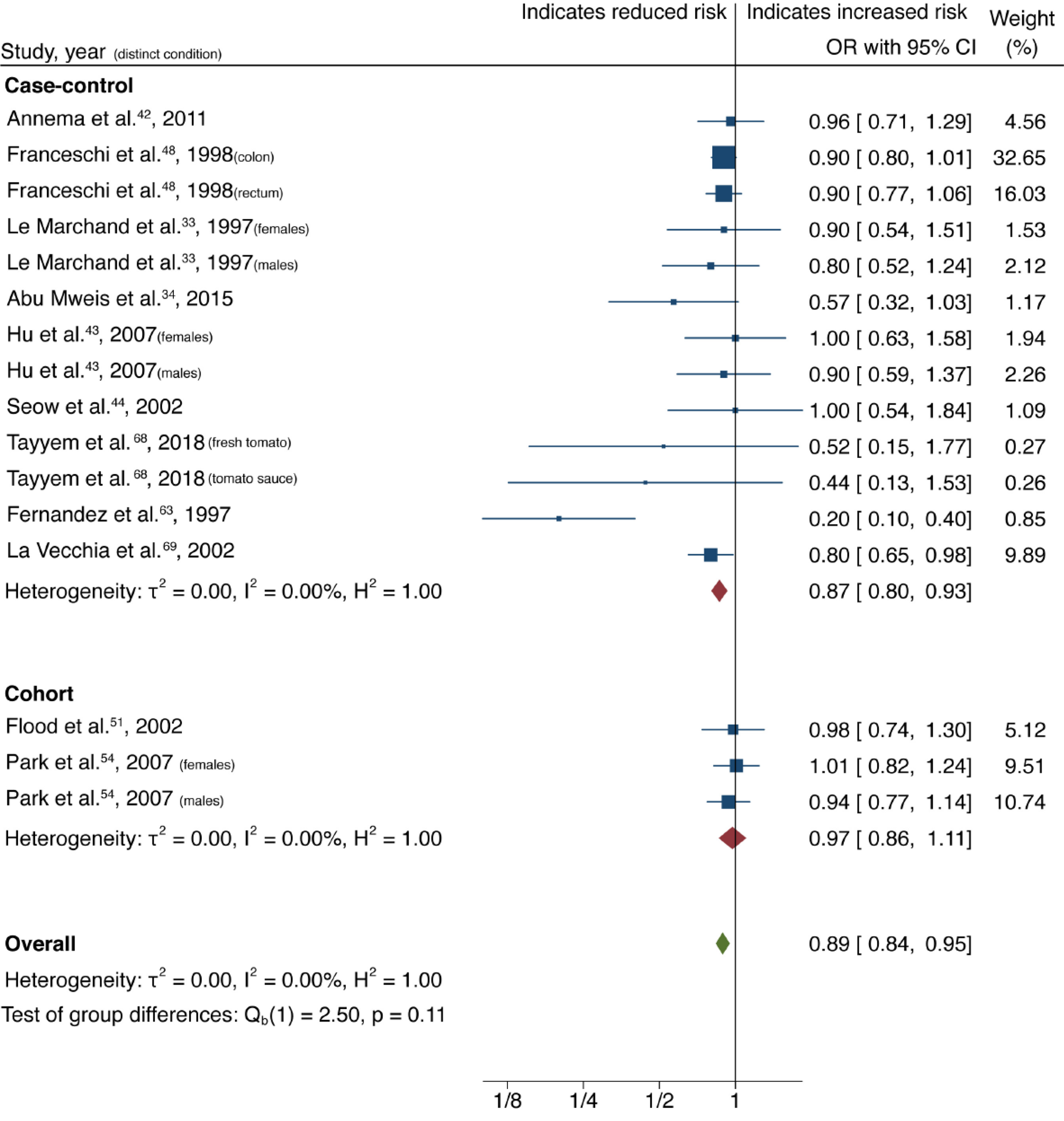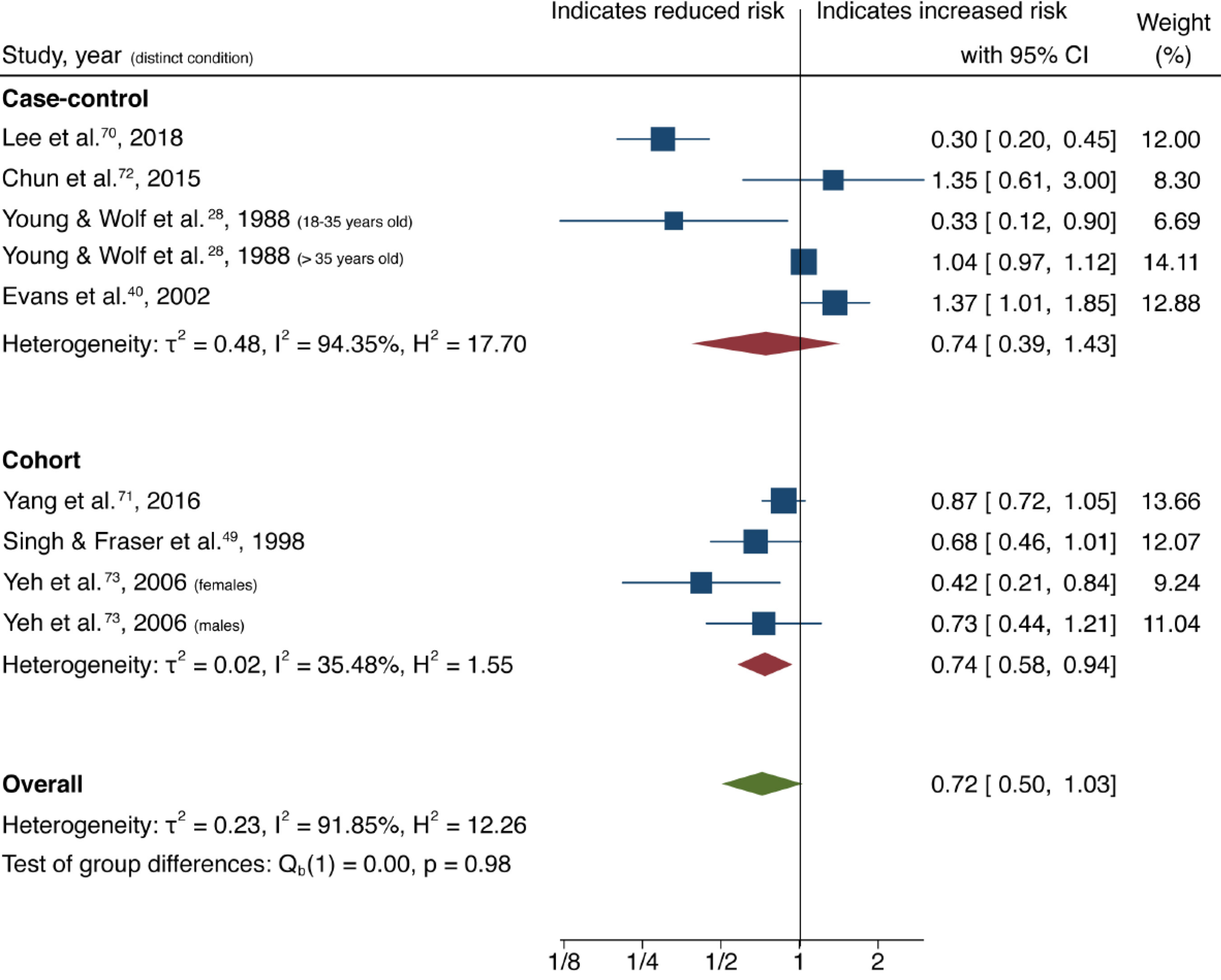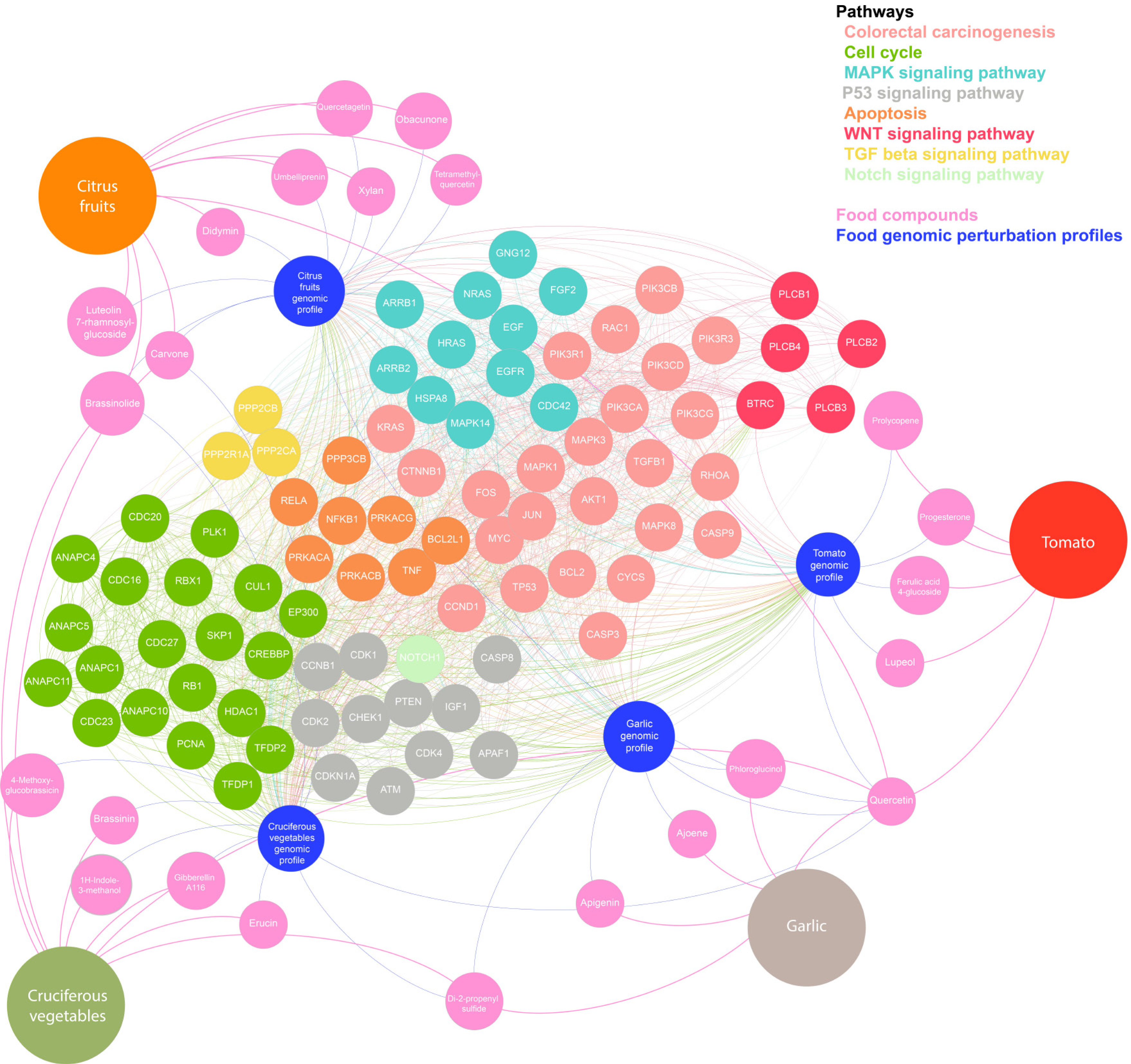Copyright
©The Author(s) 2021.
World J Clin Oncol. Jun 24, 2021; 12(6): 482-499
Published online Jun 24, 2021. doi: 10.5306/wjco.v12.i6.482
Published online Jun 24, 2021. doi: 10.5306/wjco.v12.i6.482
Figure 1 Flow Diagram summarizing systematic literature search strategy and outcomes.
Figure 2 Forest plot showing the association between dietary cruciferous vegetable consumption and colorectal cancer risk.
Squares and horizontal lines represent study-specific odds ratios (ORs) and 95% confidence intervals (CIs). The size of each square indicates the weighting of the study in the overall analysis depending on population size. Diamonds represent pooled ORs of all studies of that food item and 95%CI of the overall population. Vertical line indicates OR 1.0. CI: Confidence interval.
Figure 3 Forest plot showing the association between dietary citrus fruit consumption and colorectal cancer risk.
Squares and horizontal lines represent study-specific odds ratios (ORs) and 95% confidence intervals (CIs). The size of each square indicates the weighting of the study in the overall analysis depending on population size. Diamonds represent pooled ORs of all studies of that food item and 95%CI of the overall population. Vertical line indicates OR 1.0. CI: Confidence interval.
Figure 4 Forest plot showing the association between dietary garlic consumption and colorectal cancer risk.
Squares and horizontal lines represent study-specific odds ratios (ORs) and 95% confidence intervals (CIs). The size of each square indicates the weighting of the study in the overall analysis depending on population size. Diamonds represent pooled ORs of all studies of that food item and 95%CI of the overall population. Vertical line indicates OR 1.0. CI: Confidence interval.
Figure 5 Forest plot showing the association between dietary tomato consumption and colorectal cancer risk.
Squares and horizontal lines represent study-specific odds ratios (ORs) and 95% confidence intervals (CIs). The size of each square indicates the weighting of the study in the overall analysis depending on population size. Diamonds represent pooled ORs of all studies of that food item and 95%CI of the overall population. Vertical line indicates OR 1.0. OR: Odds ratio; CI: Confidence interval.
Figure 6 Forest plot showing the association between dietary nut consumption and colorectal cancer risk.
Squares and horizontal lines represent study-specific odds ratios (ORs) and 95% confidence intervals (CIs). The size of each square indicates the weighting of the study in the overall analysis depending on population size. Diamonds represent pooled ORs of all studies of that food item and 95%CI of the overall population. Vertical line indicates OR 1.0. CI: Confidence interval.
Figure 7 Top genes and pathways perturbed by food items.
Each food item is connected to the active compounds found commonly within that food. Food genomic profiles are connected to genes perturbed. Node colour represents shared biological pathway functionality or entity category (food compounds, food genomic perturbation profile).
- Citation: Borgas P, Gonzalez G, Veselkov K, Mirnezami R. Phytochemically rich dietary components and the risk of colorectal cancer: A systematic review and meta-analysis of observational studies. World J Clin Oncol 2021; 12(6): 482-499
- URL: https://www.wjgnet.com/2218-4333/full/v12/i6/482.htm
- DOI: https://dx.doi.org/10.5306/wjco.v12.i6.482













